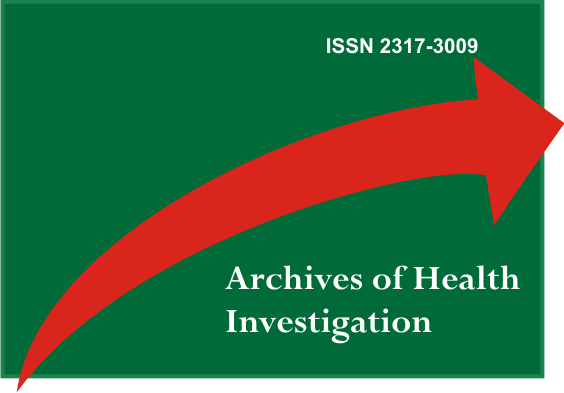Z-oo7 Photoelastic analysis of stress distribution in implant-retained obturator protheses with different attachment systems
Resumo
Objectives: Cummunication between the face cavities favors the passage of air, fluid and food into them, decreasing drastically the speech, mastication and swallowing. The aim of this study was to evaluate the dissipation loads, by the method of photoelasticity, in implant-retained palatal obturator prosthesis, during tension and compression loads. Methods:A photoelastic model of a jaw with oral-sinus-nasal communication with three external hexagon implants 4x13mm parallel to each other was made. On it were made two palatal obturator prostheses for the compressive test, and two replicas of these protheses with three metal hooks (one on the vestibular surface of the anterior midline and two bilaterally in the first molar region) for applying the tensile forces, divided in two groups according to the attachment system, one each for o’ring and the same to bar-clip. For tensile, three displacement (vertical, anterior and posterior) were performed, using a Universal Testing Machine (EMIC). The compressive loads were over the 21, 23 and 26 theeth. The images were recorded and, using Adobe Photoshop CS6, analyzed according to the number of high intensity fringes, concentration and distribution area of such stresses on the groups. Results: The compressive loads presented greater number of high intensity fringes when using bar-clip, and the same occured during the tensile test, whereas anterior displacement showed the best results for both attachment systems. Conclusions: The o’rings showed the best results in obturator prostheses when subjected to daily events simulations, as mastication and prosthesis removal.Acknowledgment: FAPESP #2014/11605-3
Downloads
Não há dados estatísticos.
Downloads
Publicado
2015-12-23
Como Citar
Matheus, H., Medeiros, R., Pesqueira, A., Dekon, S., Gennari Filho, H., & Goiato, M. (2015). Z-oo7 Photoelastic analysis of stress distribution in implant-retained obturator protheses with different attachment systems. ARCHIVES OF HEALTH INVESTIGATION, 4(1). Recuperado de https://archhealthinvestigation.emnuvens.com.br/ARCHI/article/view/932
Edição
Seção
Patologia e Propedêutica Clínica


